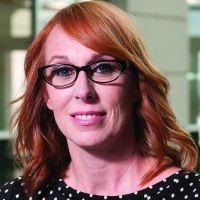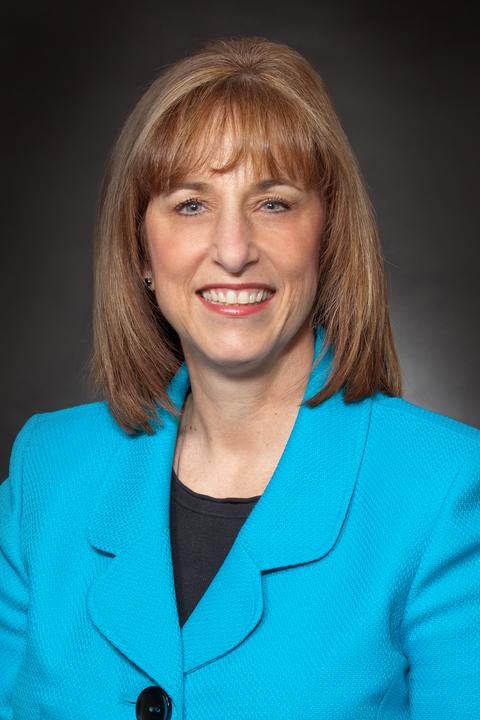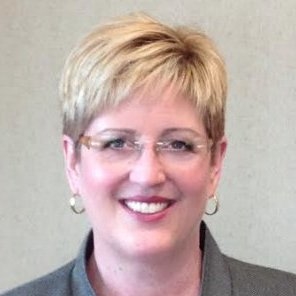Remote reading of radiology images used to be called "teleradiology." Now the service is so common that most folks just call it radiology. Large hospitals and health systems have led the way not only in adopting telemedicine but also making it commonplace.
But their services and delivery formats are still evolving, several healthcare leaders tell FierceHealthcare, as access, satisfaction, cost and consumerism drive the latest wave of remote care programs.
Supporting smaller provider organizations
Academic medical centers often provide telemedicine services to support providers and patients in smaller hospitals, for example. The University of Maryland Medical System (UMMS), based in Baltimore, employs telemedicine to offer specialized clinical programs to providers throughout the state and the Mid-Atlantic region, including telestroke, telecardiology, emergency pediatric care, maternal fetal medicine consultations and high-risk pregnancy management, acute mental health, pediatric organ transplant evaluations and rehabilitation of spinal cord patients.
“Many of our telemedicine services have been provider-driven,” says Marc Zubrow, M.D., vice president of telemedicine for UMMS and medical director of its eCare program. “A hospital on the Eastern Shore might decide it needs emergency pediatric care or cardiology support through telemedicine.”
RELATED: Most healthcare executives plan to invest in telehealth—here's why
Atlantic General also relies on UMMS intensivists and critical care nurses for remote monitoring of intensive care patients as part of the eCare network, which connects 11 Maryland hospitals with about 100 beds to a hub on the campus of the university.
“High-end tele-ICU is very technology intensive, but there are reams of data that show it provides better ICU care and is a more efficient way to do it,” Zubrow says.
The remote program meets the needs of the patients, the smaller hospitals and the medical center. The local hospitals face challenges recruiting intensivists, but still need 24/7 coverage of the ICU, Zubrow says.
“It’s onerous for families to visit the big city hospital when someone’s in intensive care. But this way, the patient can receive the same level of care and stay local. In addition, the tertiary centers don’t have the ICU beds to take in all these patients,” he says.
Saving patients time and money

Kaiser Permanente is pushing beyond remote bed monitoring to offer a new service in its recently opened San Diego medical center. “Patients can hold video visits with their clinicians from the comfort of their beds,” says Angie Stevens, Kaiser Permanente’s executive director of Telehealth IT.
Telemedicine also connects patients who have trouble getting to a medical center, she says. “Video visits have certainly improved our ability to reach homebound patients and patients with mobility or transportation challenges.”
Providing healthcare access to individuals in remote locations drove the second wave of telemedicine’s growth, following an initial emphasis on improving efficiency, says Richard Bakalar, M.D., managing director of healthcare advisory services for management consulting firm KPMG. The “third wave is about access, satisfaction and cost,” he says. “The other key driver is consumerism.”
RELATED: Business opportunities abound outside of traditional care delivery settings
The high-deductible health plans that have shifted financial responsibility for the bulk of healthcare visits to patients have brought price comparison to the marketplace. “Forty percent of people would be willing to get an MRI at Walmart. You know how much it’s going to cost there. When you go to an MRI center, you may not know your cost for three weeks,” says Bakalar.
That retail approach to healthcare has found ready outlets at clinics in pharmacies and stores across the country, and more of those retailers have also started providing digital services to increase “stickiness” and market share.
“Telemedicine visits where you pay a small, flat fee upfront provide a retail experience where you know what your bill will be and can just discuss the medical issue,” Bakalar says.
Health systems and some physician practices have embraced that same model of telemedicine to build loyalty among their patients who have minor illnesses but want to see a provider after hours, while traveling or more quickly than they can through a scheduled office visit.
RELATED: Telehealth expansion takes a step forward with Senate’s passage of CHRONIC Care Act
Bon Secours Health Systems’ telemedicine program, Bon Secours 24/7, has 11,000 enrollees, and nearly 22% have used the service. The hospital system launched the mobile service in early 2016 in Virginia. Within six months, the health system was marketing telemedicine in all of its primary markets. The service is now available nationwide—to existing patients and anyone else who wants to use it—for $49.

“Sometimes it’s a patient’s first experience with Bon Secours. Others like the continuity of care from a system they know and like that their primary care provider can see that they had a visit and were issued a prescription right as a PDF in their medical record,” says Louise Edwards, senior manager of business development and planning for the Marriottsville, Maryland-based system, which has among its holdings 19 acute care hospitals. Across the board, patients express high satisfaction with the service and its convenience, she says.
The University of Pittsburg Medical Center (UPMC) has a similarly structured telemedicine program, AnywhereCare, that’s received high marks from users, who rate the experience 4.8 out of 5.0 and providers 4.9 out of 5.0, says Melinda Schriver, senior director of Telehealth Strategic Solutions for the system, which includes more than 30 hospitals.
“People call and say they are very pleased. They compare it to the house call of years ago.”
Creating a telemedicine staffing service
Both health systems staff their telemedicine service with a mix of in-house providers, who primarily service local patients during regular business hours, and providers from the telemedicine companies with which they contract for round-the-clock coverage and the technology platform.
“We invited physicians who wanted to be providers to join. Overwhelmingly our younger physicians say, ‘Sure, I’ll do that,’” Edwards says. The average visit takes nine minutes, with an additional two minutes for the physician to wrap up. “Our physicians can do five or six visits in an hour. They may be toggling into the service from one of the retail clinics we run in partnership with a large grocery chain. If they have someone walk in, they just put themselves as busy,” she says.

Emergency medicine specialists take the telemedicine visits for UPMC. “The physicians are becoming more and more comfortable and looking to see where we can expand services on demand,” Schriver says. She expects the system to offer postdischarge follow-up and scheduled behavioral health visits soon.
“Today, most patients use the service for primary or urgent care, but the next step is offering different uses,” Edwards says. She expects Bon Secours 24/7 to expand to offer postsurgery follow-up, annual wellness visits to Medicare beneficiaries and chronic heart failure monitoring in the fall.
Physical therapy could follow soon. “Patients would need to do the first visit in person, so we can teach them how do the exercises. Our vice president of rehabilitation services is very interested in that application,” she says.